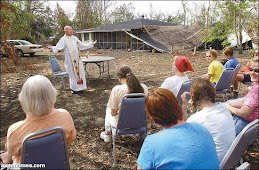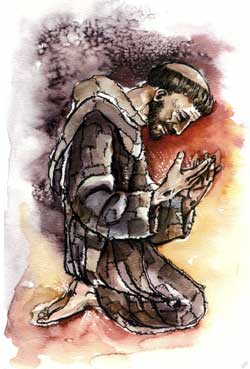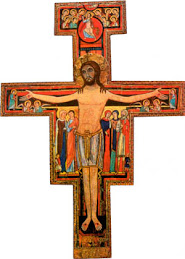There were major political, social and religious trends that had developed by the time of the birth of Francis in 1181 or 1182. These trends continued on during his lifetime and Clare’s, along with a setting of violence and war. They shaped his life and the society into which he was born.
These are some of the primary points of a book I am reading, Francis of Assisi: Return to the Gospel, by Eloi Leclerc, OFM (translated and published with the American edition in 1983 by Franciscan Herald Press, out of print). It is not a biography but an attempt to understand Francis in light of the times in which he lived.
The jacket cover provides very good information for Franciscans to remember in understanding Saint Francis. I quote:
"Of primary importance to this work on Francis is the changing world in which he found himself. His was a period in which the foundations of Feudalism were violently shaken by the advance of the 'commune.' A vertical, stable, hierachical way of life wherein vassels swore oaths of fealty to lords was giving way to the more horizonal, democratic, highly mobile, merchant society whose members valued highly the characteristics of equality and fraternity.
"Francis, child of Feudalism (a real desire for the panache of knighthood) but mostly of the commune, found himself eventually in a position to step back and evaluate both societies. In the merchant class he saw his father and the greed of the breed. In the Church he winced at the striving for wealth and power among Church leaders.
"At the sensitive hands of the author, the son of Pietro Bernardone comes forth as one in whom the call of the divine blended with the highest ideals of Feudalism and with the fabric of the merchant approach. On that fateful day in February 1208, Francis opened the Scriptures to Jesus' sending of the Apostles. Inspired, Francis saw the answer he sought - the new way of life to serve his leige Lord with the mobility of the apostles as opposed to the immobility of the feudal system, with the practice of poverty as opposed to the lust for money of the secular society, and with the dedication to the democratic fraternity of true brotherhood. Friar Minor on the go was he.
"Francis of Assisi is not a true biography but an attempt to understand Francis in the light of history. Once the author has shown the fundamental change in history and Francis' envelopment in it, the rest falls in line. The new movement initiated by Francis was a strong and true departure from the feudal monasticism. As great numbers swelled the ranks of the Order there had to be a choice: to follow the free (somewhat anarchical) spirit of the early followers or the more secure and ordered monastic approach.
"In Leclerc's hands Francis sees and trembles because of what he sees as a loss of his ideals which the world so much needed. The reader feels the heaviness of the solitude, the glory of the Stigmata on Alverna, the uplifting idealism of Francis and Clare, and peacefulness in the meeting of Sister Death. But most of all, to the present day follower of Francis there is the clear presentation of the ideal and the challenge to follow. This is the moment for all Franciscans to watch carefully Francis of Assis and his return to the gospel."
Leclerc, in Francis of Assisi, says that after the ecstasy of Saint Francis and receiving the stigmata, Saint Francis wrote a hymn of praise to console Brother Leo. He wrote his Te Deum. It welled up from his heart and leaves us all in dazzled amazement and eyes fixed on the reality of God.
You are Three and One, the Lord God of god.;
You are love, charity; You are wisdom, You are humility,
Amen.


















No comments:
Post a Comment